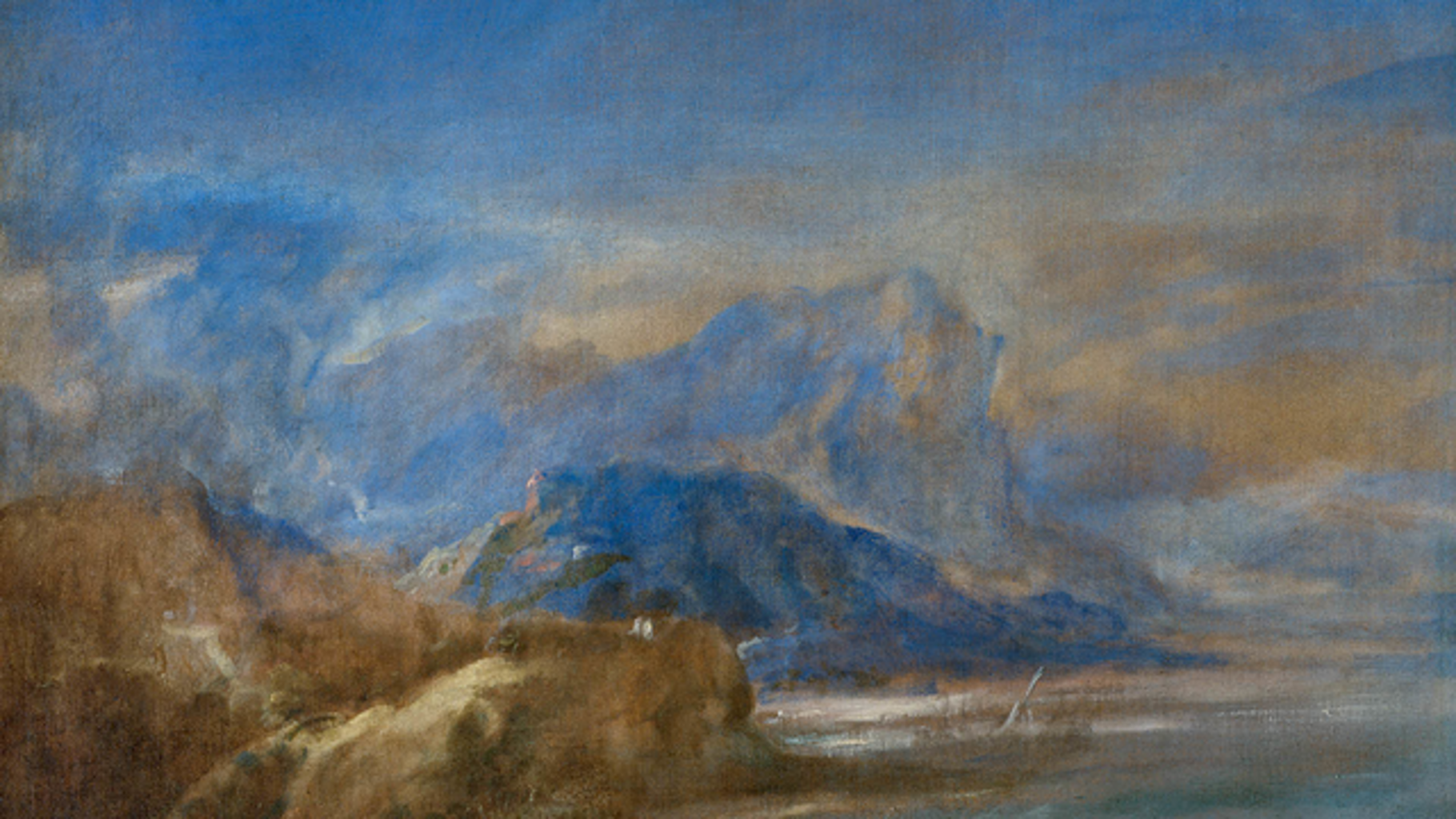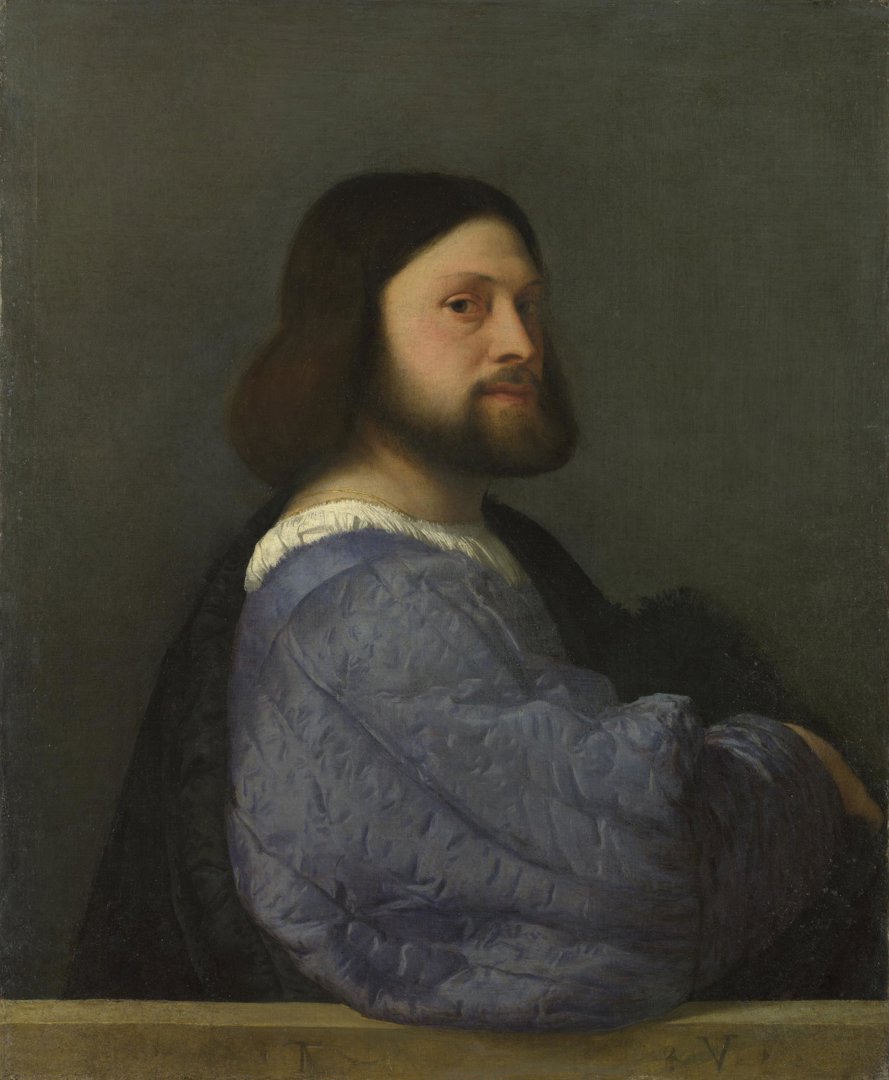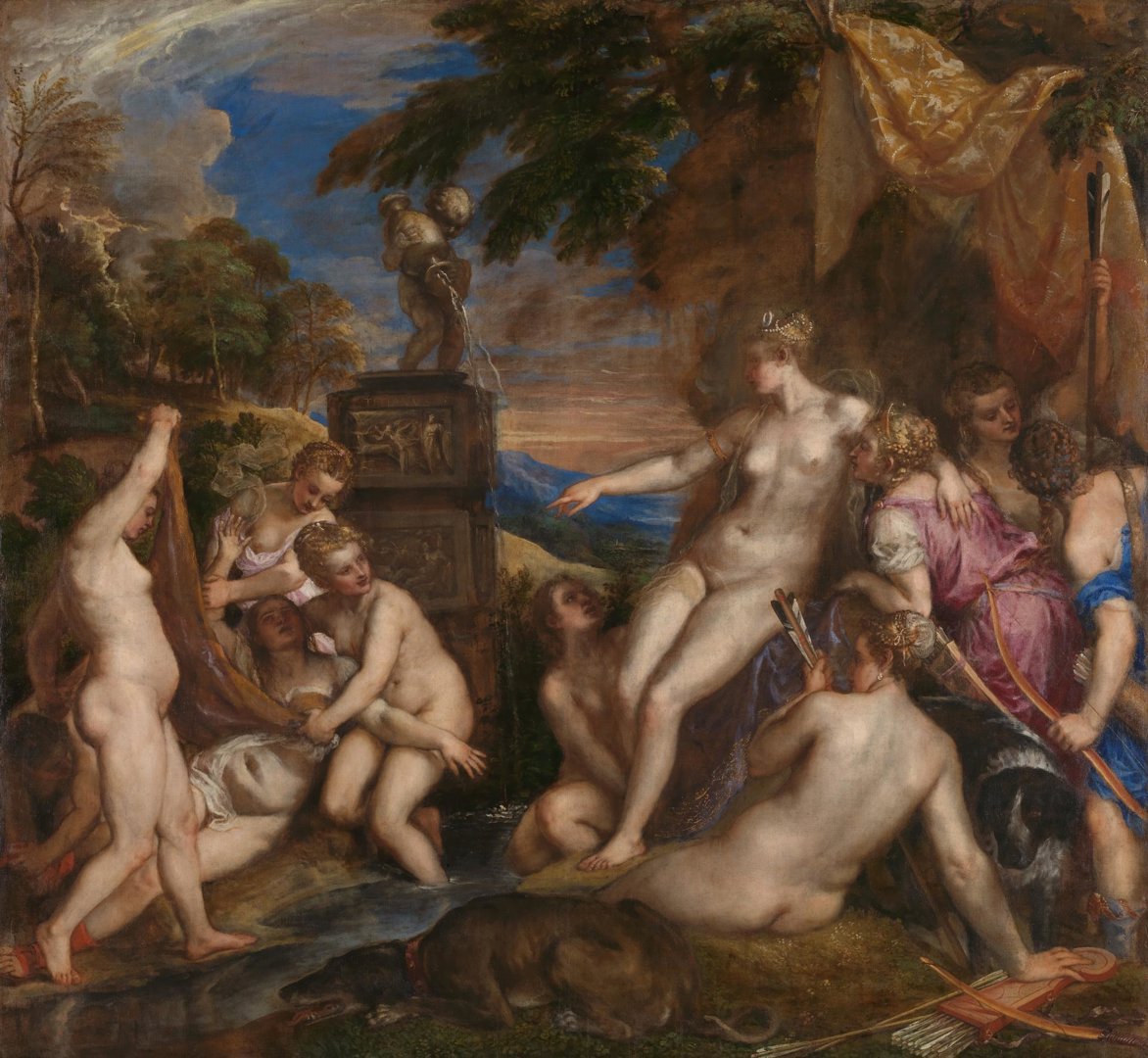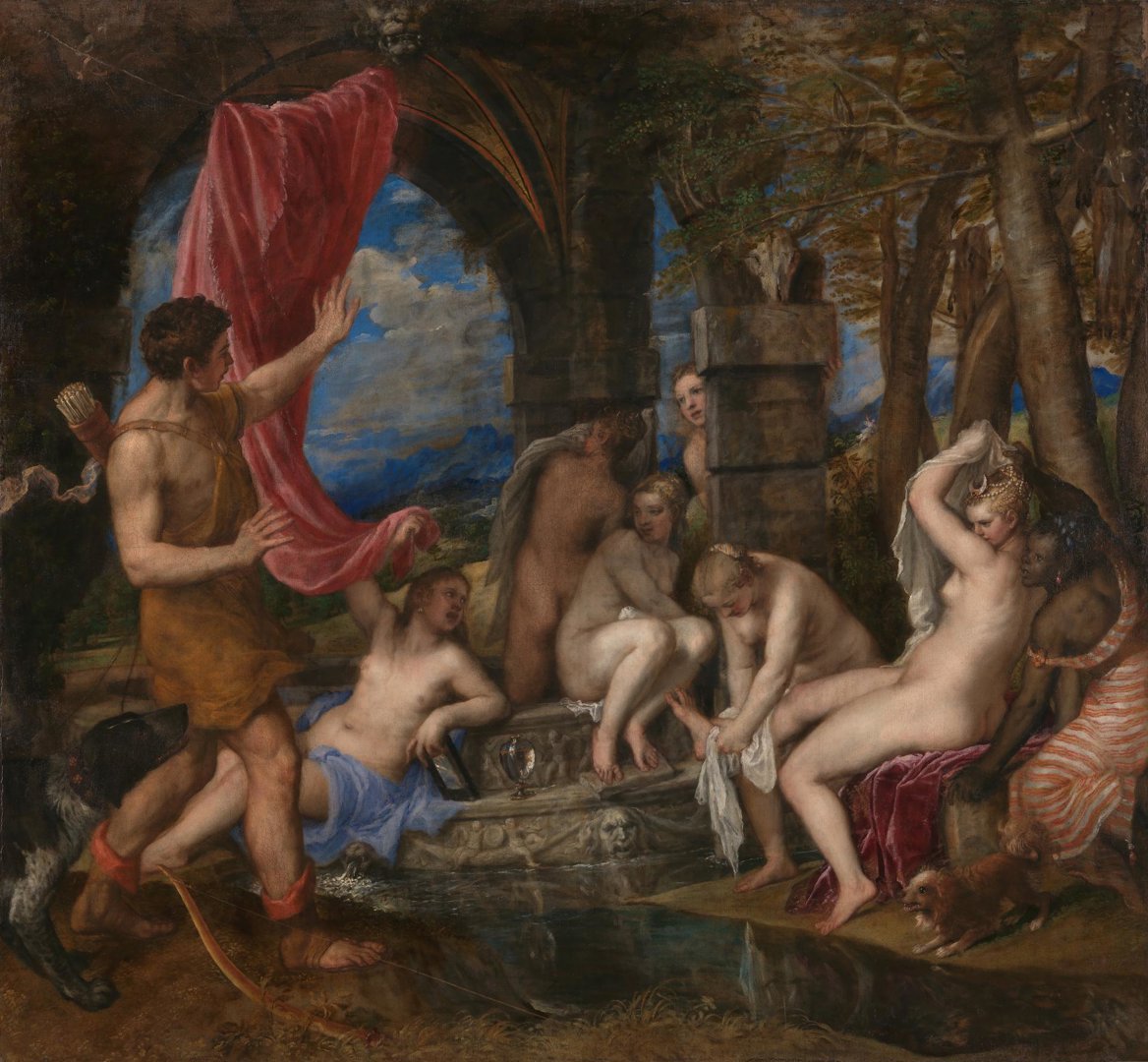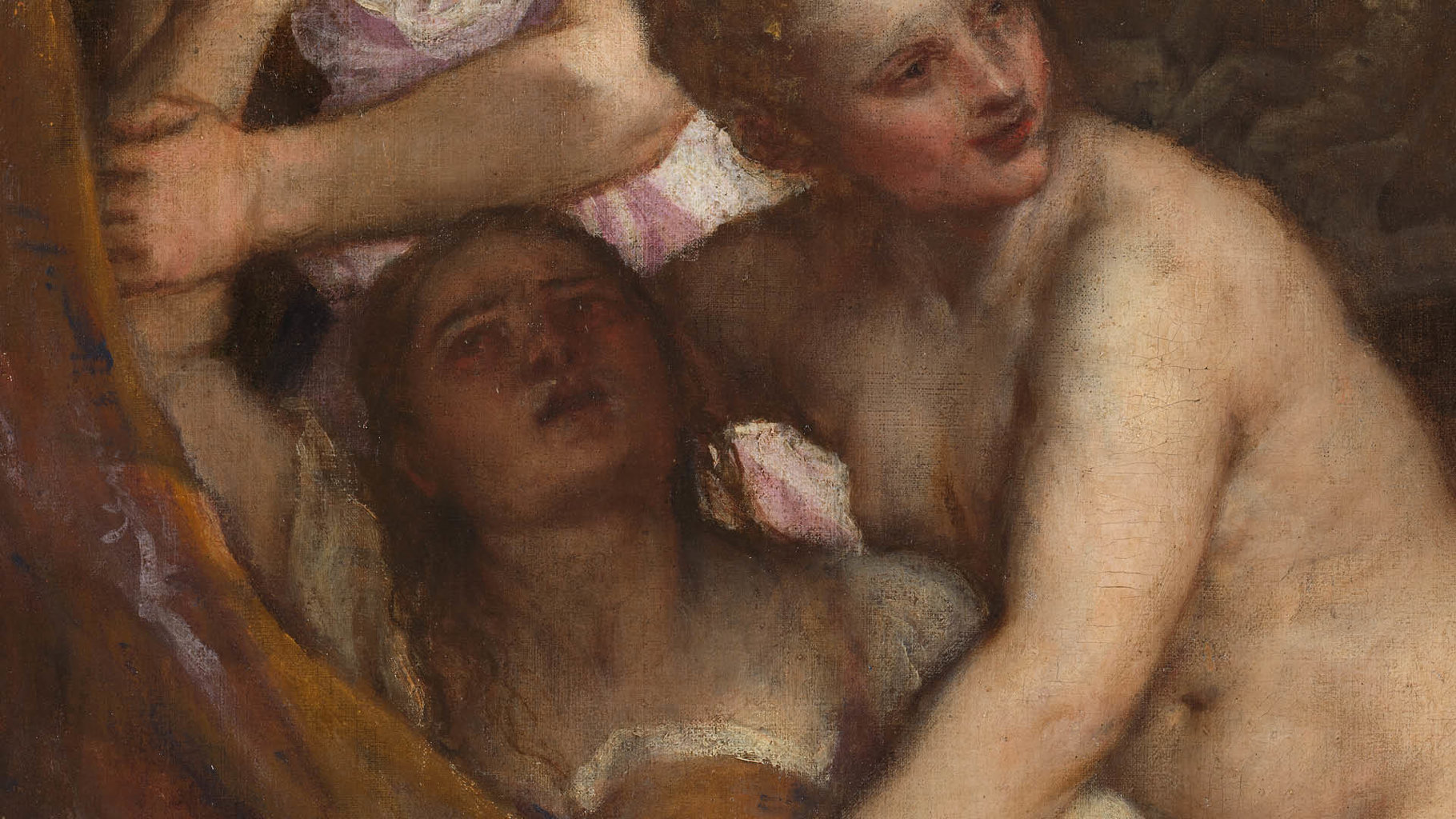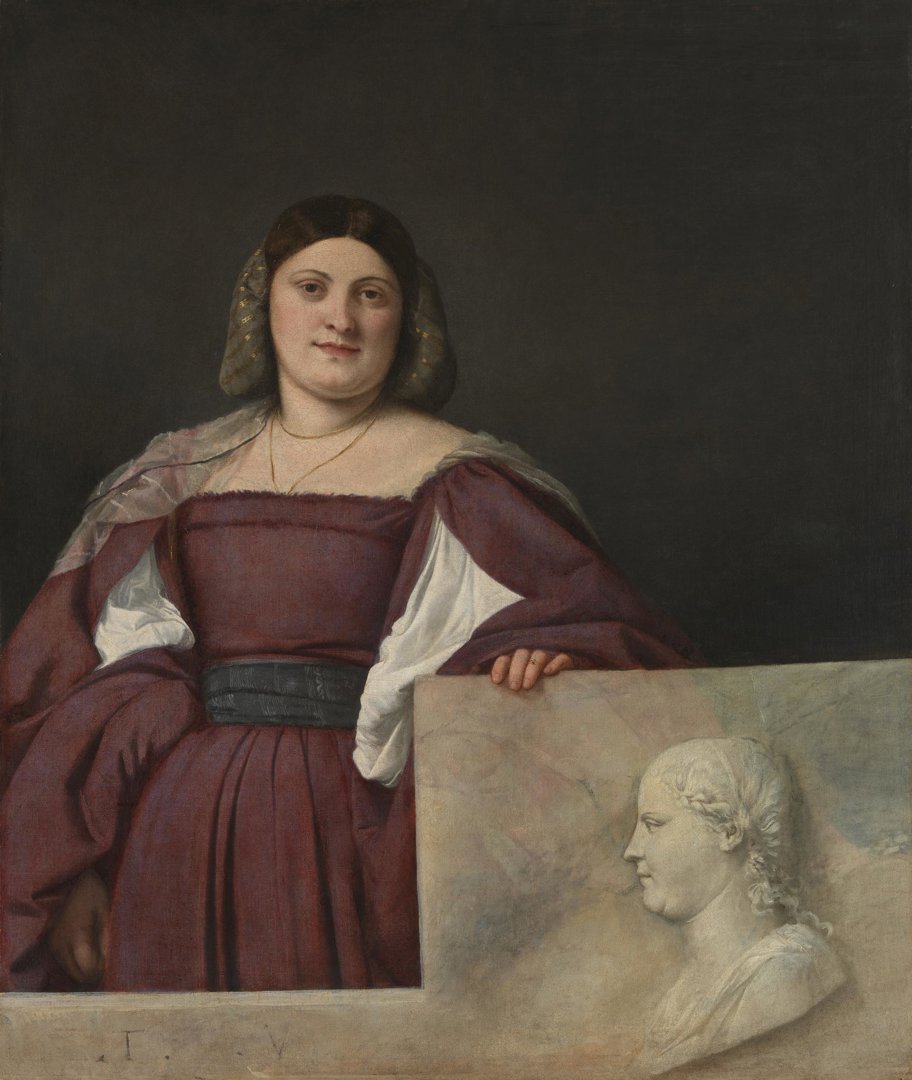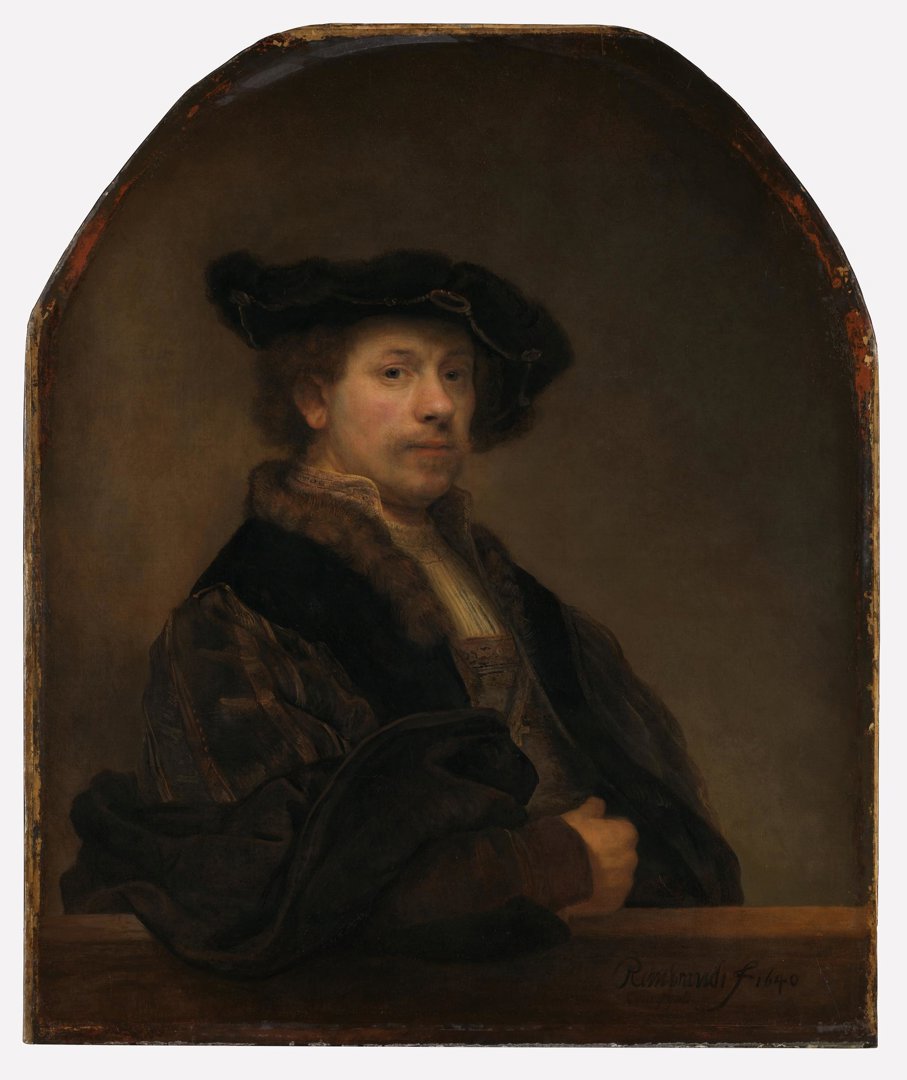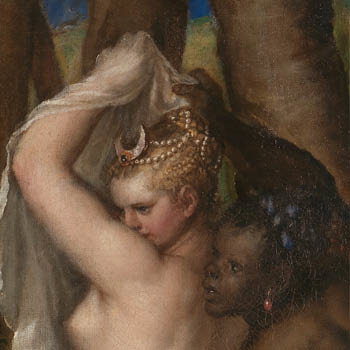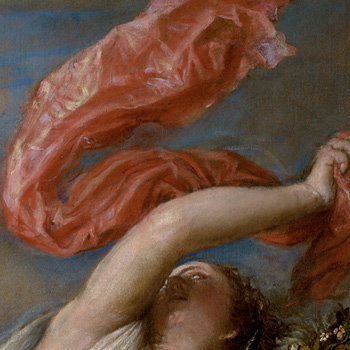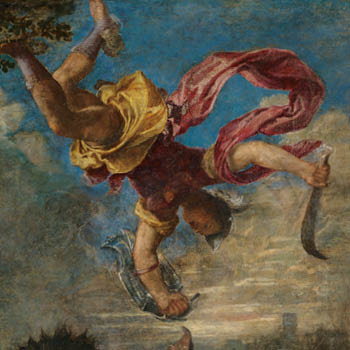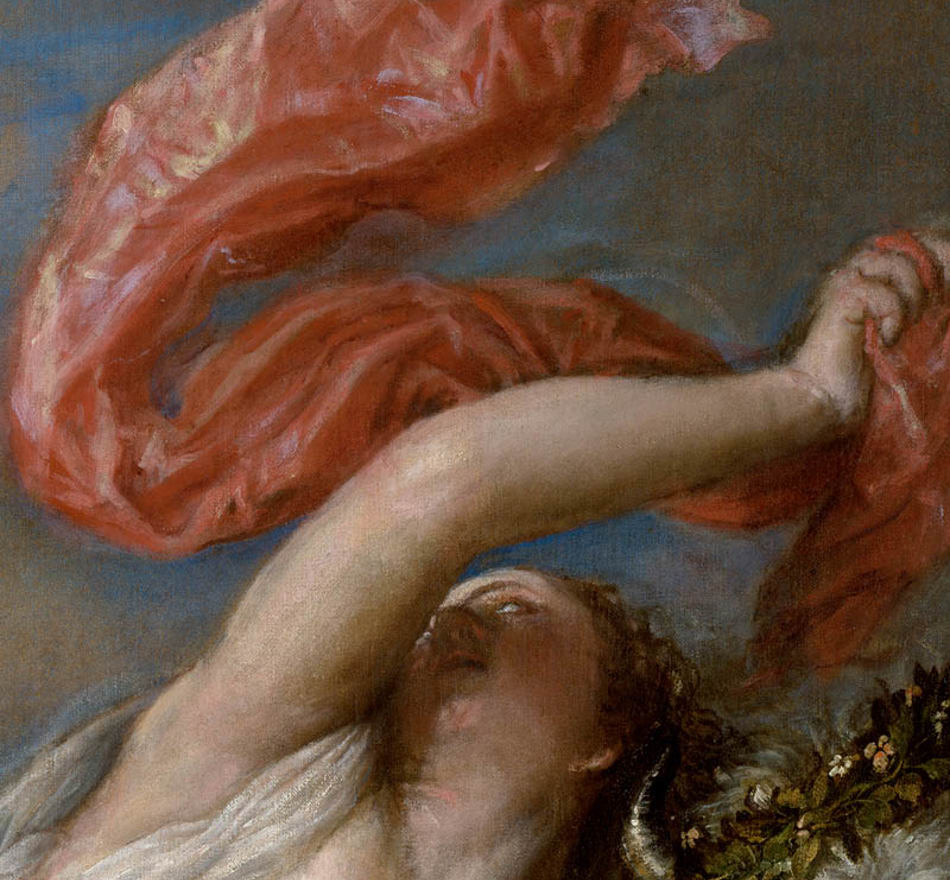A long... long career
Titian had one of the longest careers of any artist; he was still painting well into his 70s.
He was born and spent his early years in Pieve di Cadore, a town in the foothills of the Dolomites, north of Venice. He moved to Venice itself in around 1500, aged about 10. He never lost touch with Pieve and often spent his summers there; the region’s beautiful scenery visibly the inspiration for many of his paintings' landscapes.
Multi-talented innovator
He innovated across the board: landscape, portraiture, anatomy and the nude, Classical subjects, and religious images. He was prolific.
Take this portrait, possibly of Gerolomo (?) Barbarigo, the wonderful silk sleeve seems to reach, in 3-D fashion, beyond the painting as the figure glances at us over his shoulder.
Power, patrons, and status
A roll call of Europe’s rich and powerful commissioned works from him: the Medici, the Este, the Farnese and the Gonzaga families. He painted portraits of Emperor Charles V, Philip II of Spain, Francis I of France, Pope Paul III, and successive doges.
He is one of the first artists to have a privileged artistic position, beyond that of an artisan. He was highly regarded by his contemporaries and patrons.
His letters to his patron Philip, King of Spain, are revealing; while not addressing him as an equal - Titian starts his letters with a flurry of obsequiousness - Titian makes requests of the king that might appear presumptuous.
Stylistic evolution
His style evolved over decades; culminating in his groundbreaking ‘late style’ characterised by a looser and freer handling of paint. He was, at times, even using his fingers to apply paint.
La Serenissima
His paintings epitomise the Venetian School: vibrant, intense colours; a wide range of pigments; convincing textures; and expert handling of oil.
He based himself in the city throughout his career. It was one of the richest and most cosmopolitan cities in the world; spices, textiles, and, importantly, lapis lazuli and other minerals for making pigments and paint were traded from far and wide.
Unlike visitors to the exhibition, Titian never saw the ‘poesie’ displayed together in one room as intended. The paintings (on canvas) were rolled up and sent off to Philip II of Spain sporadically; Titian himself never set foot in Spain.
A deeper meaning
What really sets him apart is his ability to convey emotion; the psychological depth of his paintings is a first for the period.
In the ‘poesie’ for example, we can see pregnant Callisto’s desperation as the nymphs grapple her, yanking her clothes to reveal her stomach; and Actaeon’s surprise as he unwittingly finds himself in the wrong place at the wrong time; perhaps already realising the fatal consequence of his presence.
Even at a young age, Titian gave his portraits an emotional depth that had not been seen before. In his 'Portrait of a Lady' ('La Schiavona'), the sitter looks out at us confidently; her relaxed expression engaging our own.
A Renaissance influencer
Many great painters including Velázquez, Rembrandt, and Rubens were inspired by Titian. We can trace poses, choice of subject matter, compositions, and technique back to Titian.


